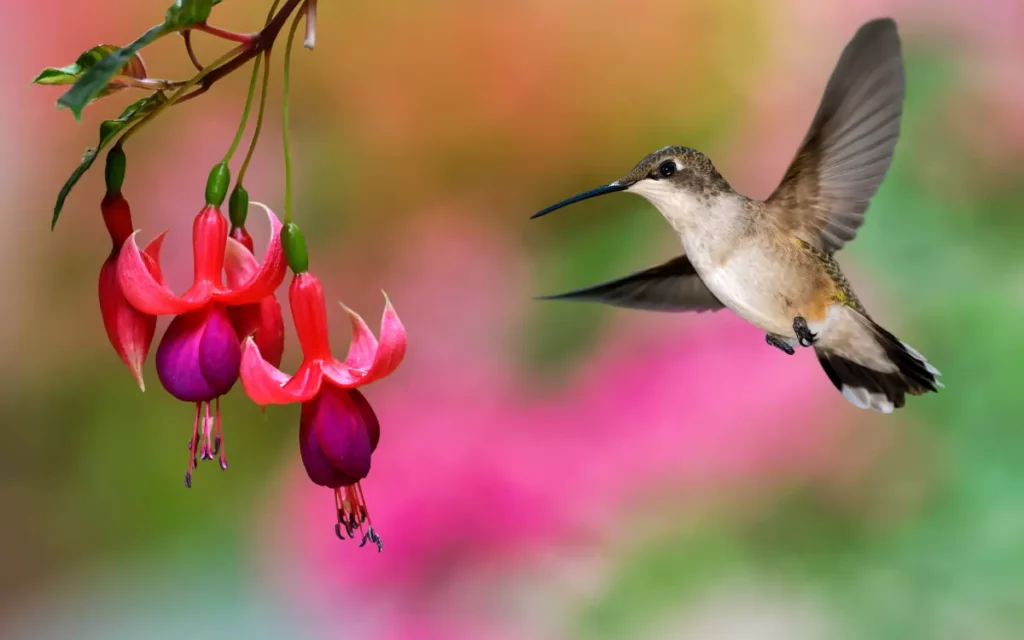Did you know that hummingbirds are some of the most fascinating creatures on Earth? These tiny, birds are not only known for their stunning colors but also for their unique abilities, such as hovering in mid-air and beating their wings at incredible speeds. in this article, we will give you facts about them you should know!
8 Hummingbirds Facts you should know

1.Size and Weight
The Bee Hummingbird of Cuba holds the title of the smallest bird in the world, measuring just about 2 inches in length and weighing less than a dime at approximately 2 grams .
2.Wing Beats and Flight Speed
Hummingbirds can beat their wings up to 80 times per second and achieve speeds of up to 37 miles per hour. During courtship dives, their speed can reach an astonishing 60 miles per hour .
3.Energy Consumption
With the fastest metabolism among vertebrates, hummingbirds consume about half their body weight in nectar daily. They need to feed every 10-15 minutes to maintain their energy levels .
4.Migration Marvels
Some species, like the Ruby-throated Hummingbird, undertake epic migrations, flying nonstop for up to 500 miles across the Gulf of Mexico. The Rufous Hummingbird, on the other hand, travels over 3,000 miles during migration .
5.Heart Rate
A hummingbird’s heart can beat up to 1,260 times per minute during flight. In a state of torpor, used to conserve energy, their heart rate can drop to as low as 50 beats per minute.
6.Memory and Vision
Hummingbirds have excellent spatial memory, capable of remembering the locations of flowers and feeders. Their vision extends into the ultraviolet spectrum, allowing them to see colors invisible to humans.
7.Unique Tongues
Their tongues, adapted for nectar feeding, are split and have hair-like structures. Hummingbirds can lap up nectar at speeds of up to 17 licks per second.
8.Tiny Eggs and Nests
Hummingbird eggs are the smallest of any bird species, about the size of jellybeans. Their nests, smaller than a dollar bill, are often made from plant fibers and spider silk .

